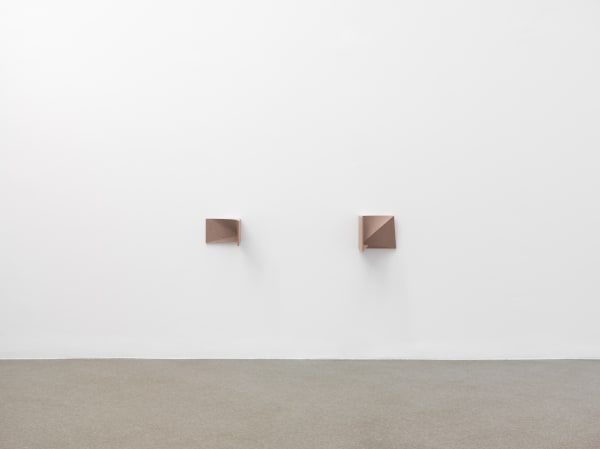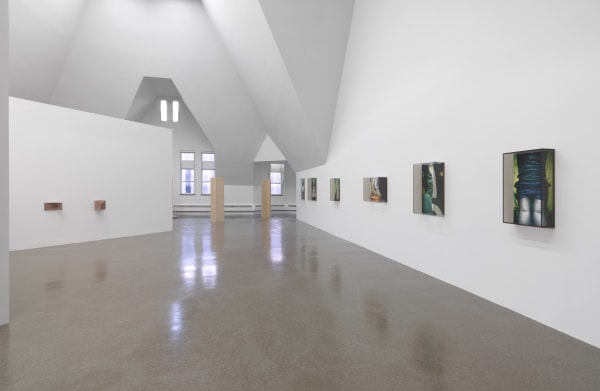For the final exhibition this season, the Renaissance Society presents the work of two artists, Astrid Klein and B. Ingrid Olson.
Side by side, works by Klein and Olson offer an opportunity to explore the affinities and differences in the artists’ respective approaches to sculpture, collage and photographic imagery. Their practices share a tendency to manipulate or call attention to space, as if testing out ways of being in the world. As space itself—whether physical or psychological—becomes subject matter, they also draw into focus dynamics of representation, social structures and negotiations of gender.
B. Ingrid Olson’s work responds to borders and the structure of space. Her photographs are performative, recording investigations of an individual body as it shifts in relations to its surroundings, selected objects and the camera. Within these images, the artist casts herself as the anonymous participant in her immediate environment and the active creator of an ambiguous pictorial field, full of blurs and mirrored doublings. Each work is the afterimage of an activity, but also a momentary pause in time as Olson triggers the shutter and flash. Presented in deep, open-faced acrylic frames, her photographs themselves become multi-dimensional objects.
Astrid Klein’s collages tease out the psychological spaces implied in existing imagery, paying close attention to how the female body is depicted, viewed or addressed. The artist adds evocative text fragments to images of women appropriated from popular culture, overlaying the scenes with notes of dissonance or ironic affirmations of the feminine roles they depict. In their extraction of familiar scenes, the collages take aim at “a woman’s place,” including the expectation of certain behavior or balance of power in gendered spaces.
Scale, too, plays a crucial role in the artists’ practices. Klein’s large black and white photoworks and her sculpture Flycatcher tower over the viewer, filling one’s field of vision. Klein responded to her experience as a woman in the masculine art scene in 1980s Germany by staking a spatial claim with her works, and this Renaissance Society presentation demonstrates how they come together to create a space both physical and affective within the gallery. Olson’s sculptures for this exhibition, conversely, are scaled more closely to the human body. The forms, made partially by hand and partially by computerized mill, suggest a kind of intimacy in their size, shape and placement. Positioned at waist height on the wall or in freestanding columns, they anticipate the presence of the viewer’s own body.
Curated by Solveig Øvstebø.





